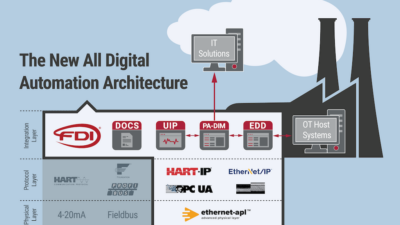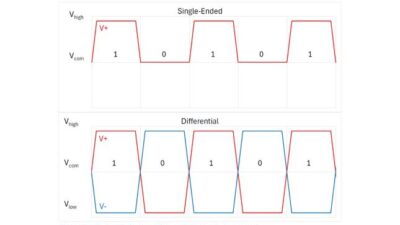The OPC Foundation is developing field-related extensions to the OPC UA framework in order to drive industrial interoperability from field level communications (FLC) to cloud and to support information technology/operational technology (IT/OT) convergence.

The field level communications (FLC) initiative of the OPC Foundation is developing field-related extensions to the OPC UA framework in order to drive industrial interoperability from field to cloud (and vice versa) and to support information technology/operational technology (IT/OT) convergence.
So far, more than 300 technical experts from over 60 OPC Foundation member companies have signed up for the various technical working groups to create the corresponding technical concepts and elaborate the specification contents. Work has also started on identifying and creating facets and profiles that define the mandatory feature sets for the various types of automation components which is essential to reach a high level of cross-vendor interoperability.
Stefan Hoppe, president of OPC Foundation, said in a press release: “Due to its versatility and vendor independence, OPC UA is already a widely used solution in many different industrial applications. Ethernet APL and TSN are important enablers, which allow OPC UA to further penetrate new application areas in process and factory automation. The OPC Foundation’s Field Level Communications Initiative bundles these activities and acts as a global center of gravity for a unified OPC UA-based industrial interoperability solution harmonized between the process industry and factory automation.”
Peter Lutz, director of the FLC Initiative, said: “The initial release candidate, which was completed in November 2020, is a major achievement because it facilitates the long-awaited standardization of controller-to-controller (C2C) connectivity. The specifications are used not only to build prototypes, they are also used to create test specifications that will be converted to corresponding test cases for the OPC UA certification tool (CTT). Furthermore, it lays the foundation for specification enhancements, covering the controller-to-device (C2D) and device-to-device (D2D) use cases in the next step.”
The initial release candidate (RC1), which focuses on controller-to-controller (C2C), consists of four parts (Parts 80-83) that specify how automation controllers exchange process data and configuration data using OPC UA Client/Server and PubSub extensions in combination with peer-to-peer connections and basic diagnostics.
These parts are extensions to the OPC UA framework and are labelled with OPC UA FX (Field eXchange):
- Part 80 (OPC UA FX 10000-80) provides an overview and introduces the basic concepts of using OPC UA for Field eXchange.
- Part 81 (OPC UA FX 10000-81) specifies the base information model and the communication concepts to meet the various use cases and requirements of Factory and Process Automation.
- Part 82 (OPC UA FX 10000-82) describes networking services, such as topology discovery and time synchronization.
- Part 83 (OPC UA FX 10000-83) describes the data structures for sharing information required for offline engineering using descriptors and descriptor packages.
A 40-page technical paper also was published that explains the overall plan and technical approach.
Since the advanced physical layer (APL) and time-sensitive networking (TSN) are key technologies for the OPC Foundation’s strategy to bring OPC UA down to the field in discrete and process industries, different cooperation strategies have been established:
- The OPC Foundation has joined the APL project group to support the development and promotion of the APL for industrial Ethernet, suitable for use in demanding applications and hazardous locations in the process industry.
- The OPC Foundation has established liaisons with IEC SC65C as well as IEEE 802.1 in order to support and align with the IEC/IEEE 60802 TSN Profile for Industrial Automation, which is essential in building converged industrial automation networks in which multiple IT and OT protocols share a common network infrastructure.
– Edited from an OPC press release by Control Engineering. See more Control Engineering networking and security stories.
ONLINE extra
Further information can be downloaded from the OPCF’s website:



